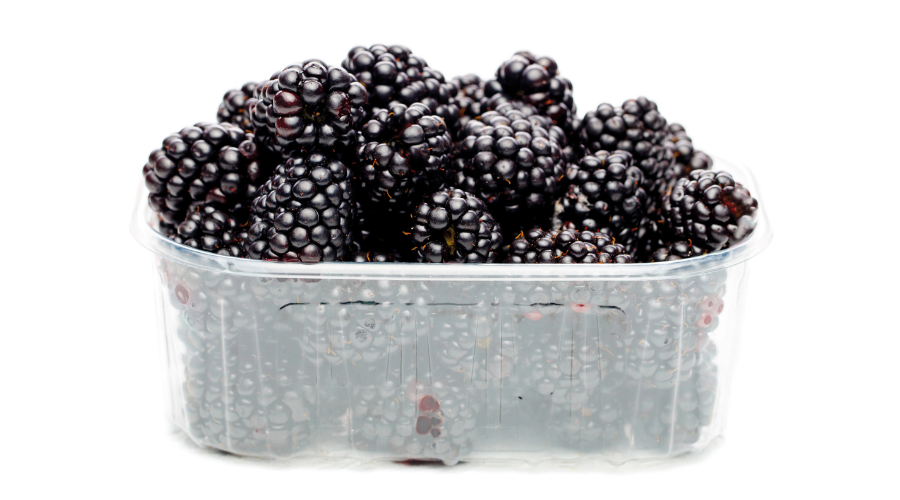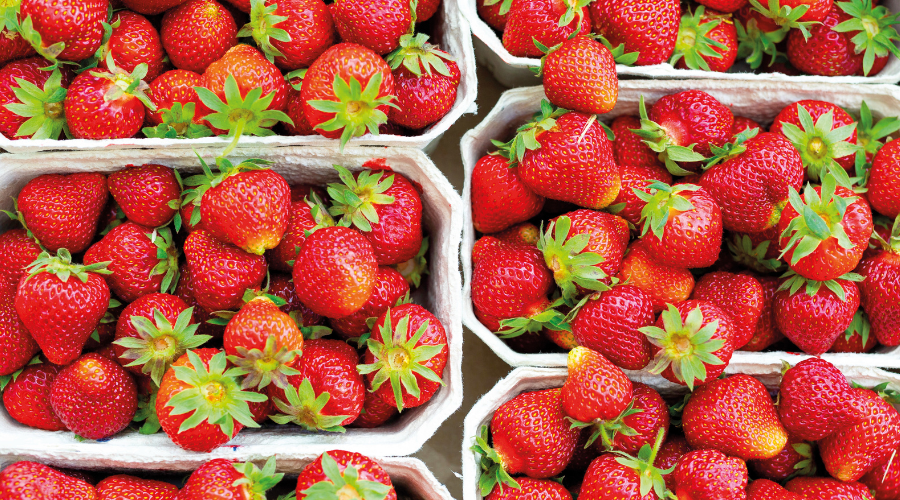Thinking about the complete package
20th April 2025
Sustainability is the buzzword of the century, but it is not just growing food sustainably that some producers are having to think about. Jeremy Sharp of Produce Packaging explains.

Plastic packaging has long been in the limelight, now accounting for almost 70% of the UK’s plastic waste, according to WRAP. This has made it the primary target in this country when it comes to reducing plastic.
Part of this drive includes new legislation in the form of the extended producer responsibilities tax, an expansion of the current ‘plastic tax’, which is set to come into full force this autumn.
The act will require producers to pay the total cost of dealing with their packaging from when it is placed onto the market to the end of its life.
While this is a welcome change for environmentalists, it is yet another challenge and cost those in the fresh produce sector must overcome, as they seek plastic-free solutions.
Why move away from plastic?
Improvements to all food packaging has been going on behind the scenes for decades, with figures showing that a record amount of plastic is now being recycled in the UK.
So if this is the case, why do we need to move away from it?
Jeremy Sharp of Produce Packaging explains: “Rigid plastic packaging in the fresh food industry is now largely made from recyclate (rPET). This is recyclable, but the opportunity for the consumer to recycle it depends on a number of factors that are inconsistent across the UK.”
A significant proportion of the population still do not have access to kerbside recycling schemes, and often for those that do, there are misconceptions over the ease of recycling.
Jeremy adds: “Contaminates such as bubble pads or food waste which are not removed prior to disposal can render packaging unsuitable for recycling.
“Local authorities also have varying directives on what can and can’t be recycled. Our pad-free soft fruit punnets are helping to address this.”
Essentially, the majority of rigid plastic used for fresh produce could be recycled, but better education and infrastructure is needed to boost this.
Some plastic products, such as film wraps and lidding films face additional challenges to recycling because they do not have any kerbside opportunities to recycle them. However, increasing availability of ‘return to store’ schemes are helping, says Jeremy.
Innovation in packaging
There have been some very significant changes and innovation to packaging in place for over a decade, that perhaps have gone largely unnoticed to the average consumer.
This includes to fruit such as apples, pears, peaches and nectarines which were once sold in polystyrene trays for protection.
Jeremy says: “The UK has replaced tens of millions of polystyrene trays annually, with moulded fibre (paper pulp) trays, the same material as egg cartons.
This is a very sustainable raw material because it’s recycled wastepaper from the box and print industries. Carton boards also play an increasing role in this sector.”
For sensitive crops such as soft fruits and salads, which rely on the protection that packaging offers, alternatives to plastic have been limited.
What was available was also not always as environmentally sound as they may first appear.
This includes soft fruit punnets made from sugar cane, an early alternative, which have a legacy of environmental disruption at their source because the sugar cane crop replaced natural habitat.
There were also high air miles from transporting it from its source. However, sustainable alternatives to plastic are being developed and introduced for the fresh produce sector.
Jeremy says: “Some moulded fibre is used but, for retail, carton board produced from sustainably managed forestry is more suitable due to its ability to withstand the whole production chain from plant to plate.
It’s robust enough to withstand all aspects of the cool chain, from blast chilling of
the freshly picked fruit to delivery to store.”
But there are still major challenges associated with the transition that producers and packers face, not least cost, but also product shelf life and quality, and food safety.
Jeremy says: “No retailer or food producer would go through these changes without stringent testing.
For over 10 years, in conjunction with retailers and producers, we have done extensive and repeated trials across different products and packaging to make sure there is no detrimental impact on product quality or shelf life, or migration of packaging materials.
Producers will also carry out very stringent shelf-life testing on their own sites, to ensure they are using the alternative packaging best suited to the product and retail environment.”

Improving shelf life
In Produce Packaging’s trials, it has found that moving to paper-based packaging from plastic has not shown any detriment to the product, and in some cases has even improved shelf life.
Jeremy shares: “We have found that tomatoes on the vine in paper packaging can actually extend shelf life because it absorbs some of the moisture from the pack’s atmosphere, inhibiting the development of fungus on the vines.”
While for the majority of growers supplying the retail industry, the type of packaging used is generally non-negotiable, growers packing for their own branded products are also well aware of the need to move towards more sustainable packaging, says Jeremy.
And while this is positive for the environment, it carries a cost.
Major retailers have already moved to plastic-free alternatives in many of their ‘top tier’ ranges, where the consumer is more likely to appreciate the difference and offset the cost of the packaging, but for lower margin produce, plastic is still widely used.
Jeremy says: “Plastic’s biggest benefits are that it is available in quantity and is incredibly versatile and cost effective.
It is quick to convert to packaging items at scale. Paper-based alternatives do take longer to produce and the raw materials are not available in such abundance.
“In some instances, the cost of the plastic-free packaging is often close, and in terms of unit volume, the larger scale items mean there’s less difference. However, it can cost anything from 10–300% higher than its plastic packaging counterpart.”
However, supply and demand will continue to influence cost so there is hope as the sustainability drive continues, the cost will come down.
“Because pulp has had such a significant impact on polystyrene supply in the UK, almost replacing it completely in fresh produce, the cost is now lower than polystyrene equivalents, but that has taken a long time,” points out Jeremy.
Once the new ‘extended producer responsibilities’ have full effect, retailers or suppliers will be responsible for footing the tax on material being used and its sustainability credentials, so going for plastic-free alternatives is more likely to make financial sense.
“The public’s view of plastic has grown to be very negative over the past decade, and the legislation is a direct response to this view. In combination with obligations committed to by the UK government,” says Jeremy.
“Initially at least, paper or plastic alternatives, will have a different taxable rate over plastic, or combined materials such as plastic/paper laminates.
This is because if something is made of different materials, it makes it harder to recycle and is essentially defeating the imperative to recycle more.
“The wider food industry realises that certainly in the short to medium term, plastic will be taxed more heavily than alternatives, so can be in the producers’ and retailers’ interests to move away from plastic where practical and sustainable.”
Read more fruit news.
